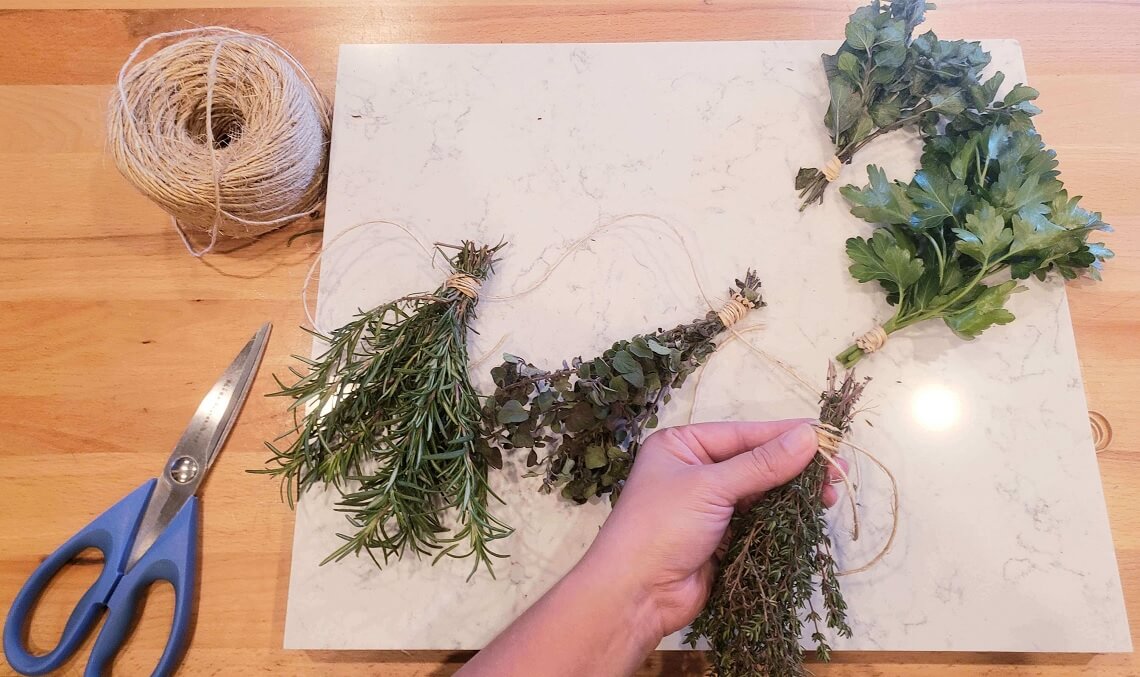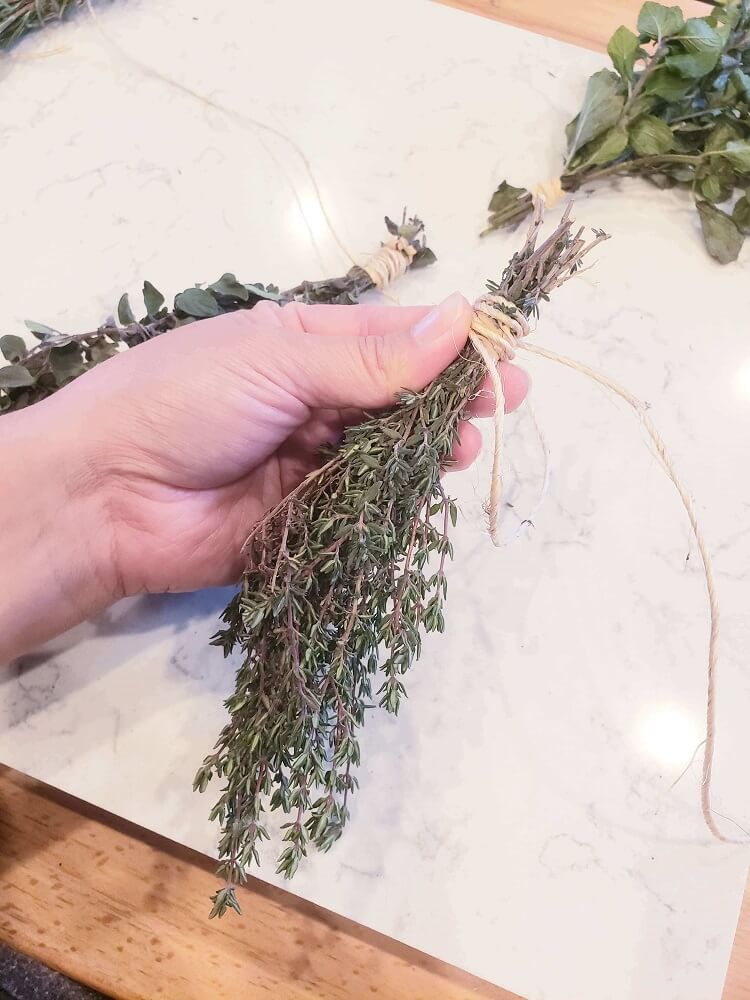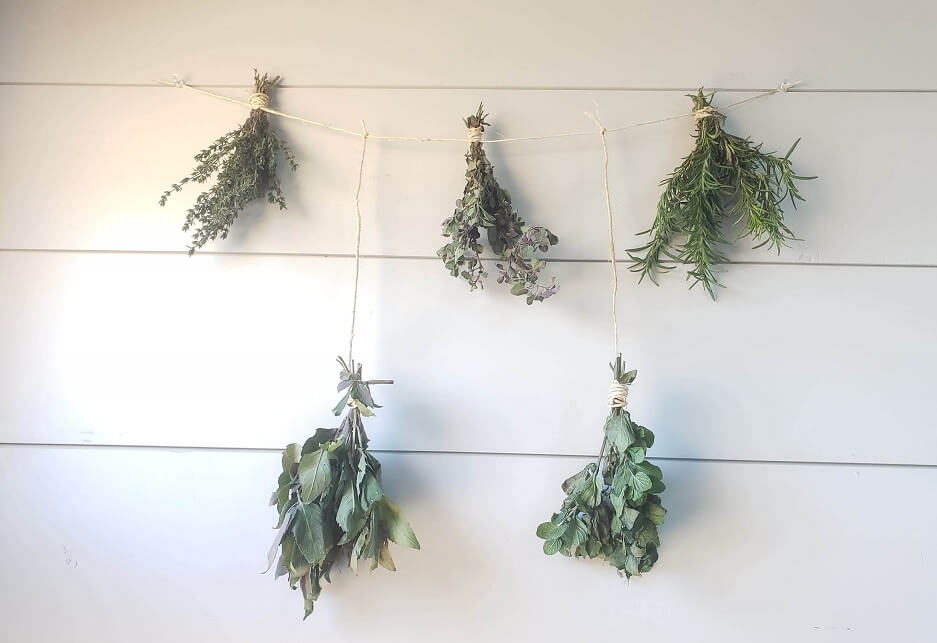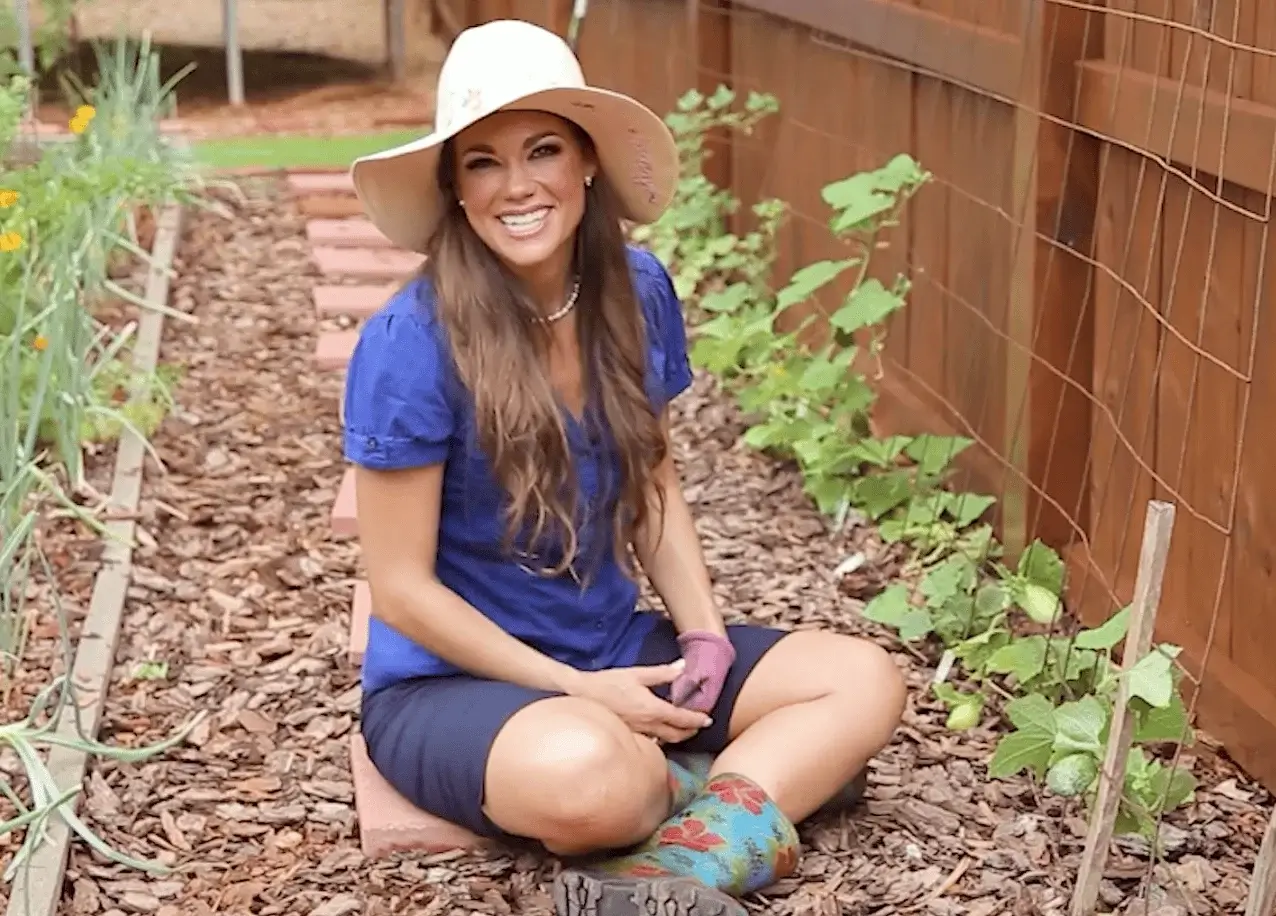Out of all the ways to preserve your organic garden harvests, dehydrating herbs may be one of the easiest to extend the life of your culinary and medicinal bounty.
There are a handful of ways to dry your fresh herbs; drying them on a rack, using a food dehydrator, the conventional oven method, or the good old-fashioned way of air-drying herbs by hanging them.
Table of Contents
How to Use a Dehydrator for Herbs
A home dehydrator is a machine that removes moisture from food, usually by forcing hot air throughout the trays or racks inside. By removing the water from the food material, the items will be preserved without molding or rotting. This food preservation method will help you store your favorite herbs that you harvest to be able to use at a later time!
By using a machine instead of hanging herbs to dry, you’ll have more control over the drying process, such as the temperature. Plus you’ll be able to dehydrate your herbs even if the ambient humidity is too high to air-dry herbs by hanging. Using a dehydrator for herbs is also helpful for larger herb pieces, or for chopped roots, bark pieces, or smaller herb leaves that can’t be hung to dry.
Use a dehydrator for fresh herbs when:
- The humidity level in your home is too high to hang dry. (Over 60% humidity would be too wet for hanging/air-drying.) If you live in a humid climate you may have mold otherwise.
- Preserving tender herbs that are fragile, small, or difficult to tie in a bundle (such as thyme).
- Speed is necessary – drying time is lessened when using a dehydrator rather than hanging herbs to dry.
- Drying herbs with high moisture content. Basil, tarragon, mint, etc. have high amounts of water and are more likely to mold unless dried quickly.
- Drying root or bark chunks such as willow bark, ginger root pieces, etc.
While I’ve seen tips and suggestions for drying herbs in a conventional oven or even a microwave oven, you need to be aware of the pros and cons of these methods.
You want your dehydrating temperature to stay between 95 and 115 degrees Fahrenheit. Any higher than that and your herbs will be too hot and lose precious volatile oils and heat-sensitive compounds (such as bioactive compounds) that add their culinary flavor or medicinal value. Many ovens cannot safely maintain such a low temperature, which makes them unsuitable for oven drying. But if your oven can, you can use an oven set to 100 degrees instead of a dehydrator and lay the herbs over the oven rack.
As for microwaves to dehydrate herbs, I dislike using microwaves at all for any cooking or medicinal purposes. See more about microwaves and why I avoid them. As my Mom, Mimi, says, “It will cook out all the oils, so don’t do it!” Can you tell it’s not my favorite method? It’s far too easy to scorch your herbs or overheat spots when trying to dry in a microwave to make this method truly… unuseful.
Hanging Herbs to Dry
If you live in an area with sufficiently low humidity (aim for less than 60%) you can simply hang your herbs to dry. This is my favorite method when it comes to simplicity and avoiding electricity use. Sturdy herbs that grow on stalks are best for this method unless you use drying racks as mentioned below.
Herbs that dry well in bundles include:
- Chamomile
- Dill
- Fennel
- Lavender
- Lemon Balm
- Marjoram
- Parsley
- Rosemary
- Sage
- Stevia
- Summer Savory
The hang-drying method is as simple as one, two, three. Pick from your herb garden, wash them, and tie them with twine or rubber bands.
1. Pick your herbs. The suggested time to harvest herbs for drying is before flowering is finished. Make sure you allow enough of a stem (part of the herb you won’t use) to tie and hold the bundle of herbs together.
2. Wash them and dry them thoroughly. Wash the fresh herb harvest in cool water and then dry them in a salad spinner or with paper towels. Eliminate any parts of the herbs that are pest-infested, show signs of mold growth or mildew, or appear bruised and over-ripe.
3. Tie them into bundles. You can use natural twine, which may need to be tied again partway through drying, or you can use rubber bands that will tighten as the thicker stems will shrink over time. Keep your bundle of stems to no more than a handful (about ¾ of an inch across). This ensures that the stems in the middle of the bundle get plenty of air movement. Air-dried herbs will mold if the circulation is bad.
4. Hang! Lastly, hang them upside down to dry. Choose an area with plenty of the all-important air circulation and out of direct light. Don’t forget to label your bundle of herbs with the date harvested and date hung to dry!
You can hang them on a hanging rack, or tie them up with twine and hang them on a wall in a cool, dark place. A comfortable humidity room is ideal. We always use a paper label with our tied herbs so we know exactly which herbs are hanging, and when we put them up to dry.
You can also do the same with peppers. Simply thread twine through a wide-eyed needle, pierce it through the tops of the peppers, and hang from a drying rack or rope.
Excess moisture or humidity can cause mold, and too much sun and heat will leave the dehydrated herbs tasteless.
Leave your herbs upside down for 7-14 days depending on the thickness of the leaves. You’ll know they are finished when you pinch a leaf and it snaps in half with a crunch instead of bending.
Once your home-dried herbs are finished, carefully remove them from their stems by stripping the foliage from the stems, keeping the individual leaves as whole and unbroken as possible. This will give you the freshest flavor throughout the winter months.
Finish by labeling with the plant name and date on your container. You’ll want to store them in an airtight container out of direct sunlight. Crumble the whole leaves right before using.
Dehydrating Herbs on a Drying Rack Variation
An alternative method for drying herbs is a drying rack similar to a small spaced oven rack or mesh screen. This is like a window screen set horizontally that you can place herbs on to let the air circulate instead of hanging them up. For fragile or short-stalked herbs like thyme, a drying screen or mesh liner can be a better option.
The same rules apply – don’t overcrowd your herbs on the screen by keeping them spread out in a single layer. Make sure there is plenty of that all-important air circulation and that you keep them out of direct sunlight in a dry location. I recommend moving the herbs or turning them over if you use this method to make sure all the herbs dry evenly.
Tips for Dehydrating Herbs Properly
If you’re trying to dehydrate quality herbs, keep some of these tips in mind:
- Label your herbs with the date harvested and the type of herb it is. Trust me – you don’t want to skip the labeling step.
- Many herbs will have a stronger, more concentrated flavor after drying. Keep in mind that you can use about three times more fresh than dried herbs.
- Store your dehydrated herbs in an air-tight container out of direct sunlight. Light will degrade the flavor of culinary herbs and the healing properties of medicinal herbs.
- Make sure your herbs are fully dried before putting them into storage or they won’t be shelf-stable. You’ll end up with a moldy mess and lots of food waste if you don’t.
- Remember, 1 tablespoon (3 teaspoons) of fresh herbs = 1 teaspoon dried.
- A good rule of thumb for your dried herbs is that if your herbs have no scent, they have no flavor.
- Don’t pour from your actual herb container or spice jar over your hot burner or bubble pot because you’ll let the moisture from the steam into your jar which can compromise your herb quality. You’re also exposing them to heat which has the same effect. Measure your herbs into a separate container or measuring bowl, and you also eliminate the risk of accidentally adding too much.
Dehydrating herbs to store them works for many types of herbs and can be a budget-friendly way to preserve your garden harvest. You get the benefits of the freshest herbs year-round!














